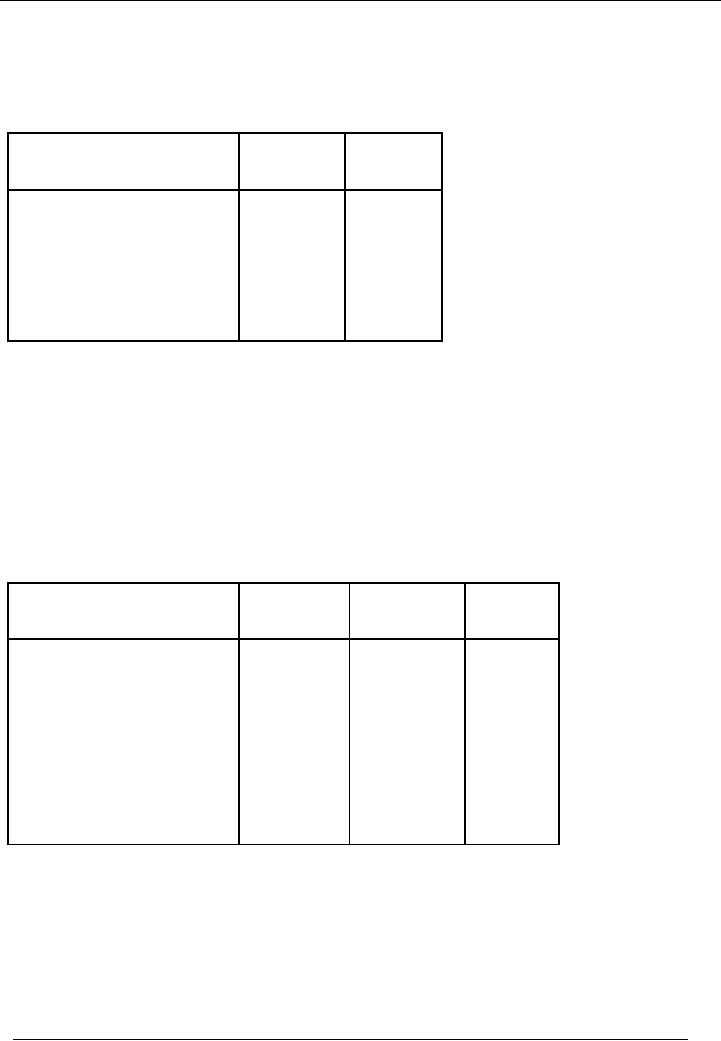 |
DEPRECIATION |
| << COST OF GOODS SOLD STATEMENT |
| GROUPINGS OF FIXED ASSETS >> |

Financial
Accounting (Mgt-101)
VU
Lesson-17
DEPRECIATION
Depreciation
is a systematic allocation of the cost of a
depreciable asset to expense
over its useful life. It is
a
process
of charging the cost of fixed
asset to profit & loss
account.
Fixed
Assets are
those assets which
are:
� Of
long life
� To be
used in the business to generate
revenue
� Not
bought with the main purpose
of resale.
Fixed
assets are also called
"Depreciable Assets"
When
an expense is incurred, it is charged to
profit & loss account of the
same accounting period in
which it
has
incurred. Fixed assets are
used for longer period of time.
Now, the question is how to charge a
fixed
asset
to profit & loss account.
For this purpose, estimated
life of the asset is determined.
Estimated useful
life
is the number of years in which a fixed
asset is expected to be used
efficiently. It is the life for
which a
machine
is estimated to provide more
benefit than the cost to run
it. Then, total cost of the
asset is divided
by
total number of estimated years.
The value, so determined, is
called `depreciation for the
year' and is
charged
to profit & loss account.
The same amount is deducted
from total cost of fixed
asset in the financial
year
in which depreciation is charged. The net
amount (after deducting depreciation) is called `Written
down
Value'.
WDV =
Original cost of fixed asset
Accumulated Depreciation
Accumulated
Depreciation is the depreciation that has
been charged on a particular asset
from the time of
purchase
of the asset to the present time. This is the amount
that has been charged to
profit and loss
account
from the year of purchase to the
present year.
Depreciation
accumulated over the years is
called accumulated
depreciation.
Useful
life
� Useful
Life / Economic Life is the time period
for machine is expected to
operate efficiently.
� It is the
life for which a machine is
estimated to provide more
benefit than the cost to run
it.
GROUPINGS
OF FIXED ASSETS
Major
groups of Fixed
Assets:
� Land
� Building
� Plant
and Machinery
� Furniture
and Fixtures
� Office
Equipment
� Vehicles
No depreciation is
charged for `Land'. In case of
`Leased Asset/Lease Hold
Land' the amount paid for it is
charged
over the life of the lease
and is called Amortization.
RECORDING
OF JOURNAL ENTRIES
Purchase
of fixed asset:
Debit:
Relevant
asset account
Credit:
Cash,
Bank or Payable Account
129

Financial
Accounting (Mgt-101)
VU
For
recording of depreciation, following two
heads of accounts are
used:
� Depreciation
Expense Account
� Accumulated
Depreciation Account
Depreciation
expense account contains the depreciation
of the current year. Accumulated depreciation
contains
the depreciation of the asset from the financial
year in which it was bought
up to the present
financial
year. . Depreciation of the following
years in which asset was
used is added up in this account.
In
other
words, this head of account
shows the cost of usage of the
asset up to the current year.
Depreciation
account
is charged to profit & loss
account under the heading of
Administrative Expenses. In the
balance
sheet,
fixed assets are presented
at written down value.
i-e.
WDV =
Actual cost of fixed asset
Accumulated Depreciation.
Journal
entry for the depreciation is given
below:
Debit:
Depreciation
Expenses Account
Credit:
Accumulated
Depreciation Account
PRESENTATION
OF DEPRECIATION
Charging
depreciation to any head in profit &
loss account depends upon
the nature of work performed
by
the
asset. Consider an organization has
purchased computers. If computers
are being used by the
management,
this means that administrative work is
done by computers. So, depreciation of
computers will
be
charged to Administrative Expenses. On
the other hand, if machines
working in the factory are
computerized.
The value of depreciation of the
computers attached with the
machines will be charged
to
cost
of goods sold. The reason
being, the computers are the
part of manufacturing process & depreciation
of
computers
will be charged to the cost of
production. Again consider the
selling department of the business
is
very
large. Depreciation of computers
used in selling department will be
charged to selling
expenses.
You
can see that computer is a single
asset and its depreciation is
charged in three different
heads depending
upon
the nature of work done by the
computer.
Depreciation
for the year is charged
to:
i.
Cost
of Goods Sold
ii.
Administrative
Expenses
iii.
Selling
Expenses
�
In
balance sheet Fixed Assets
are shown at Cost less
Accumulated Depreciation i.e. Written
Down
Value
(WDV)
METHODS
OF CALCULATING DEPRECIATION
There
are several
methods for calculating depreciation. At
this stage, we will discuss
only two of them
namely:
� Straight
line method or Original cost
method or Fixed installment
method
� Reducing
balance method or Diminishing
balance method or written
down method.
STRAIGHT
LINE METHOD
130

Financial
Accounting (Mgt-101)
VU
Under
this method, a fixed amount is calculated by a
formula. That fixed amount is
charged every year
irrespective
of the written down value of the
asset. The formula for
calculating the depreciation is given
below:
Depreciation
= (cost Residual value) / Expected
useful life of the
asset
Residual
value is the
cost of the asset after the expiry of
its useful life.
Under
this method, at the expiry of asset's
useful life, its written
down value will become
zero. Consider the
following
example:
�
Cost
of the Asset
=
Rs.100,000
�
Life
of the Asset
= 5
years
�
Annual
Depreciation
= 20 % of
cost or Rs.20,000
Written
down value method
�
Cost
of the Asset
= Rs.
100,000
�
Annual
Depreciation
=
20%
Year 1
Depreciation
= 20 % of
100,000
=
20,000
Year 1
WDV
=
100,000 20,000
=
80,000
Year 2
Depreciation
= 20 % of
80,000
=
16,000
Year 2
WDV
=
80,000 16,000
=
64,000
Example
Cost
of an asset: Rs.
120,000
Residual
value: Rs. 20,000
Expected
life:
Rs. 5
years
Calculate
depreciation and the written down
value of the asset for five
years.
131

Financial
Accounting (Mgt-101)
VU
SOLUTION
Straight
line method
Depreciation
= (120,000 20,000) / 5 = Rs.
20,000
Particulars
Depreciation
Written
(Rs)
Down
Value
(Rs.)
100,000
Depreciable
cost
(20,000)
80,000
Dep.
Of the 1st year
Dep.
Of the 2nd year
(20,000)
60,000
Dep.
Of the 3rd year
(20,000)
40,000
(20,000)
20,000
Dep.
Of the 4th year
Dep.
Of the 5th year
(20,000)
0
REDUCING
BALANCE METHOD
Under
this method, depreciation is calculated on written
down value. In the first
year, depreciation is
calculated
on cost. Afterwards written
down value is calculated by deducting
accumulated depreciation from
the
cost of that asset(cost
accumulated depreciation) and depreciation is
charged on that value. In
this
method, the
value of asset never becomes
zero. Consider the following
example:
Cost
of an asset: Rs.
100,000
Expected
life:
Rs. 5
years
Depreciation
rate:
20%
SOLUTION
Particulars
Depreciation
Accumulated
Written
(Rs)
Depreciation
Down
(Rs.)
Value
(Rs.)
Depreciable
cost
100,000
Dep.
Of the 1st year
20,000
20,000
80,000
100,000
x 20%
Dep.
Of the 2nd year
80,000
x 20%
16,000
36,000
64,000
Dep.
Of the 3rd year
12,800
48,800
51,200
64,000
x 20%
Dep.
Of the 4th year
51,200
x 20%
10,240
59,040
40,960
Dep.
Of the 5th year
40,960
x 20%
8,192
67,232
32,768
You
see, at the end of five
years, WDV of the asset is
Rs. 32,768, not zero.
But in case of straight
line
method, the
WDV, after five years was
zero. So, in the opinion of
some people, reducing
balance method is
better
than that of straight line method,
but both methods are
effective. It is the management that has
to
decide,
which method is best suited to
their business.
Once
an asset has been fully
depreciated, no more depreciation should be
recorded on it, even though
the
property
may be in good condition and
may be in use. The objective of
depreciation is to spread the cost
of
an
asset over the periods of
its usefulness; in no case
can depreciation be greater than the
amount paid for
the
asset. When a fully
depreciated asset is in use beyond the
original estimate of useful
life, the asset
account
132

Financial
Accounting (Mgt-101)
VU
and
the accumulated depreciation account should
remain in the accounting records
without further
entries
until
the asset is retired.
133
Table of Contents:
- Introduction to Financial Accounting
- Basic Concepts of Business: capital, profit, budget
- Cash Accounting and Accrual Accounting
- Business entity, Single and double entry book-keeping, Debit and Credit
- Rules of Debit and Credit for Assets, Liabilities, Income and Expenses
- flow of transactions, books of accounts, General Ledger balance
- Cash book and bank book, Accounting Period, Trial Balance and its limitations
- Profit & Loss account from trial balance, Receipt & Payment, Income & Expenditure and Profit & Loss account
- Assets and Liabilities, Balance Sheet from trial balance
- Sample Transactions of a Company
- Sample Accounts of a Company
- THE ACCOUNTING EQUATION
- types of vouchers, Carrying forward the balance of an account
- ILLUSTRATIONS: Ccarrying Forward of Balances
- Opening Stock, Closing Stock
- COST OF GOODS SOLD STATEMENT
- DEPRECIATION
- GROUPINGS OF FIXED ASSETS
- CAPITAL WORK IN PROGRESS 1
- CAPITAL WORK IN PROGRESS 2
- REVALUATION OF FIXED ASSETS
- Banking transactions, Bank reconciliation statements
- RECAP
- Accounting Examples with Solutions
- RECORDING OF PROVISION FOR BAD DEBTS
- SUBSIDIARY BOOKS
- A PERSON IS BOTH DEBTOR AND CREDITOR
- RECTIFICATION OF ERROR
- STANDARD FORMAT OF PROFIT & LOSS ACCOUNT
- STANDARD FORMAT OF BALANCE SHEET
- DIFFERENT BUSINESS ENTITIES: Commercial, Non-commercial organizations
- SOLE PROPRIETORSHIP
- Financial Statements Of Manufacturing Concern
- Financial Statements of Partnership firms
- INTEREST ON CAPITAL AND DRAWINGS
- DISADVANTAGES OF A PARTNERSHIP FIRM
- SHARE CAPITAL
- STATEMENT OF CHANGES IN EQUITY
- Financial Statements of Limited Companies
- Financial Statements of Limited Companies
- CASH FLOW STATEMENT 1
- CASH FLOW STATEMENT 2
- FINANCIAL STATEMENTS OF LISTED, QUOTED COMPANIES
- FINANCIAL STATEMENTS OF LISTED COMPANIES
- FINANCIAL STATEMENTS OF LISTED COMPANIES